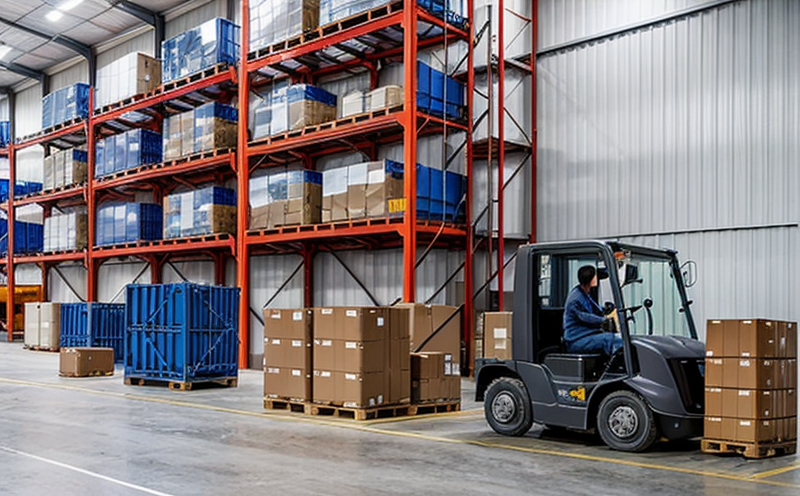SAE ARP 5605 Impact Dynamics Certification Testing
The SAE ARP 5605 Impact Dynamics Certification Test is a critical procedure in aerospace and aviation testing, ensuring that packaging and logistics systems can withstand the rigorous impact conditions encountered during transportation. This test evaluates the ability of a package to maintain its integrity under dynamic forces, thereby safeguarding the safety and functionality of cargo within an aircraft.
This certification is essential for compliance with international standards and regulatory requirements, particularly relevant in sectors like commercial aviation, military logistics, and space missions. The SAE ARP 5605 test focuses on the impact dynamics experienced during the loading, unloading, and handling phases, which can significantly influence package integrity.
The test involves subjecting packages to controlled impacts using drop towers or pendulum machines. The impact conditions are designed to simulate real-world scenarios such as drops from aircraft cargo doors or collisions with ground vehicles. Compliance with SAE ARP 5605 ensures that the packaging and logistics systems meet stringent safety criteria, thereby enhancing overall reliability and minimizing potential damage.
The test protocol is meticulously defined in SAE ARP 5605, which provides detailed instructions on specimen preparation, testing apparatus, impact conditions, and acceptance criteria. This standard ensures uniformity across different laboratories, enabling accurate and consistent results that can be trusted by all stakeholders involved in the aerospace industry.
Understanding the parameters of this test is crucial for quality managers, compliance officers, R&D engineers, and procurement personnel. By ensuring adherence to SAE ARP 5605, organizations can enhance their reputation for reliability and safety, which is paramount in the aerospace sector where any failure could have catastrophic consequences.
The testing process begins with careful preparation of the specimen, including selecting appropriate materials that will withstand the expected impacts. The apparatus used includes drop towers or pendulum machines capable of generating controlled impact forces within specified ranges. During the test, the package is subjected to a series of drops or strikes from various angles and heights to assess its resilience.
Post-testing analysis involves detailed examination of the package’s condition after exposure to these impacts. Acceptance criteria are defined in SAE ARP 5605, specifying permissible levels of damage that would still allow the package to perform its intended function without compromising cargo safety or integrity.
The test results provide valuable insights into the performance characteristics of the packaging and logistics systems under dynamic loading conditions. These data can inform improvements in design and material selection for future iterations, ensuring continuous enhancement of product reliability.
By adhering to SAE ARP 5605, manufacturers and suppliers demonstrate their commitment to safety and quality standards. This compliance is not only a requirement but also a competitive advantage, positioning them as leaders in the aerospace industry.
Scope and Methodology
| Parameter | Description |
|---|---|
| Test Specimen | The package to be tested, which must meet specified dimensions and weight criteria. |
| Impact Conditions | Simulated real-world conditions using drop towers or pendulum machines with defined force ranges. |
| Testing Equipment | Drop tower or pendulum machine capable of generating controlled impact forces within specified parameters. |
| Data Acquisition | High-speed cameras and sensors to capture and analyze impact dynamics and package response. |
| Acceptance Criteria | Description |
|---|---|
| Damage Tolerance | The maximum allowable damage that the package can sustain without compromising cargo safety or functionality. |
| Repeatability | The consistency of results across multiple test runs to ensure reliability and accuracy. |
| Data Interpretation | Analyzing impact dynamics data to assess the package’s resilience under dynamic loading conditions. |
The SAE ARP 5605 Impact Dynamics Certification Test involves a series of steps aimed at ensuring that packaging and logistics systems can withstand the harsh environmental conditions they encounter during transportation. The test begins with careful specimen preparation, followed by subjecting the package to controlled impacts using specialized equipment designed to simulate real-world scenarios.
High-speed cameras and sensors are used to capture detailed data on impact dynamics and package response, providing valuable insights into the performance characteristics of the packaging under dynamic loading conditions. Post-testing analysis focuses on determining whether the package meets acceptance criteria for damage tolerance and repeatability.
The results of this test provide crucial information that can inform design improvements and material selection, ensuring continuous enhancement of product reliability. Compliance with SAE ARP 5605 is not only a requirement but also a competitive advantage, positioning organizations as leaders in the aerospace industry by demonstrating their commitment to safety and quality standards.
Why Choose This Test
The SAE ARP 5605 Impact Dynamics Certification Test is chosen for its rigorous methodology and comprehensive approach to ensuring package integrity during transportation. This test is particularly valuable in the aerospace sector, where even minor failures can have severe consequences.
The test provides a standardized framework that ensures consistent results across different laboratories, enhancing reliability and trust among stakeholders. By adhering to this standard, manufacturers and suppliers demonstrate their commitment to safety and quality standards, positioning themselves as leaders in the industry.
The SAE ARP 5605 Impact Dynamics Certification Test offers several key advantages:
- Comprehensive evaluation of package performance under dynamic loading conditions.
- Rigorous methodology ensuring consistent results across different testing environments.
- Standardized acceptance criteria for damage tolerance and repeatability, enhancing reliability and trust among stakeholders.
- Leadership in the aerospace industry by demonstrating a commitment to safety and quality standards.
The test also supports environmental and sustainability goals. By ensuring that packaging remains intact during transportation, this certification helps reduce waste and promotes efficient logistics practices. The use of sustainable materials and design improvements informed by testing results contribute to broader sustainability efforts in the aerospace industry.
Compliance with SAE ARP 5605 is essential for manufacturers and suppliers to ensure their products meet stringent safety criteria. This compliance not only meets regulatory requirements but also enhances an organization’s reputation for reliability and safety, which is crucial in the highly competitive aerospace sector.





